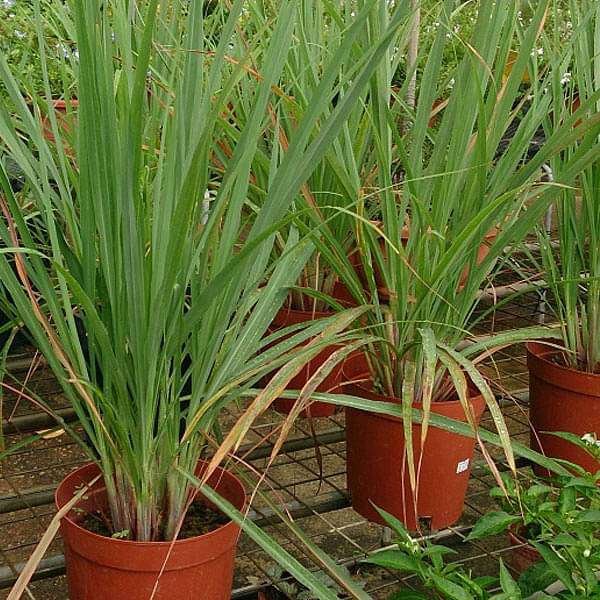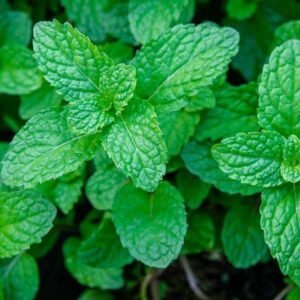Description
Lemongrass Plant: Nature’s Fragrant Healer
Lemongrass (Cymbopogon citratus) is a tropical plant known for its strong lemony aroma, tall grassy stalks, and a wide range of culinary, medicinal, and industrial uses. Native to Southeast Asia and widely cultivated in tropical and subtropical regions around the world, lemongrass is a perennial grass that thrives in warm, humid climates and well-drained soil. Its graceful appearance and rich scent make it not only useful but also an attractive addition to herb gardens and landscapes.
Botanical Characteristics
Lemongrass belongs to the Poaceae family, which also includes other grasses like citronella and vetiver. It grows in dense clumps and can reach heights of 3 to 6 feet (1 to 2 meters). The plant has long, narrow, green leaves with sharp edges and a rough texture. Its stalks are thick and bulbous at the base, similar in appearance to spring onions. The base of the stalk is the most aromatic and is commonly used in cooking and for essential oil extraction.
Lemongrass has shallow roots and spreads quickly, forming large clusters if left unmaintained. It prefers full sun and moist, loamy soil but can tolerate a range of growing conditions as long as it is not exposed to frost.
Cultivation and Propagation
Growing lemongrass is relatively easy, making it a favorite among gardeners and farmers. It can be propagated from seeds, but more commonly, it is grown through stalk division. When using stalks for propagation, the lower portion of a fresh, healthy stalk is planted directly into the soil. Within a few weeks, roots develop, and new shoots appear. Once established, lemongrass requires minimal care, other than regular watering and occasional trimming to control its spread.
Farmers often grow lemongrass as a cash crop due to its fast growth cycle, high demand, and multiple market applications. It is typically harvested every 3–4 months, with the base of the stalk being the primary part collected.
Culinary Uses
Lemongrass is a staple ingredient in many Asian cuisines, particularly in Thai, Vietnamese, Indonesian, and Indian dishes. The lower white portion of the stalk is most commonly used in cooking, as it has a strong citrus flavor with hints of ginger and mint. When crushed or chopped, it releases aromatic oils that enhance soups, curries, marinades, and teas.
In Thai cuisine, lemongrass is a key component of tom yum soup, green curry, and various stir-fried dishes. In Indian cooking, it is often used to flavor rice, seafood, and meat dishes. In the Caribbean and Africa, lemongrass is brewed into herbal teas known for their refreshing and calming properties.
Fresh lemongrass is ideal, but it is also available dried, powdered, or as an extract. The dried form is commonly used in herbal tea blends and seasoning mixes.
Medicinal Benefits
Lemongrass has long been used in traditional medicine systems such as Ayurveda, Traditional Chinese Medicine (TCM), and folk remedies. It contains several bioactive compounds, including citral, myrcene, and limonene, which are known for their antimicrobial, anti-inflammatory, and antioxidant properties.
One of the most common uses of lemongrass is as a digestive aid. Lemongrass tea is believed to relieve bloating, indigestion, and stomach cramps. Its anti-inflammatory properties help alleviate joint pain and muscle spasms, making it a popular choice in massage oils and balms.
Lemongrass also acts as a mild diuretic and detoxifier, promoting kidney function and helping to flush toxins from the body. Some studies suggest that its compounds may have anti-cancer properties, particularly in fighting liver and breast cancers, although more clinical research is needed to confirm these findings.
The calming effect of lemongrass tea makes it a natural remedy for anxiety, insomnia, and stress-related conditions. Its essential oil is frequently used in aromatherapy to uplift mood, reduce mental fatigue, and combat depression.
Essential Oil and Industrial Uses
Lemongrass essential oil is extracted through steam distillation of the plant’s stalks and leaves. It is a pale yellow oil with a strong, fresh citrus scent and is widely used in perfumes, cosmetics, soaps, and cleaning products.
The essential oil has antimicrobial and antifungal properties, making it a natural preservative and disinfectant. It is used in household cleaners, air fresheners, and insect repellents. When diffused, lemongrass oil purifies the air, repels mosquitoes and other pests, and provides a clean, invigorating atmosphere.
In the spa and wellness industry, lemongrass oil is commonly used in massages and aromatherapy treatments. Its stimulating yet relaxing qualities make it ideal for relieving tension, improving circulation, and balancing the mind and body.
Environmental and Agricultural Benefits
Beyond its culinary and medicinal value, lemongrass also provides environmental benefits. Its dense root system helps prevent soil erosion and improves soil structure. It can be planted as a natural barrier on slopes or around fields to protect against water runoff and wind erosion.
Lemongrass also serves as a companion plant in organic gardening. Its strong scent deters pests such as aphids and whiteflies, reducing the need for chemical pesticides. Additionally, it attracts beneficial insects like bees, which aid in pollination.
Farmers use lemongrass as a bio-fumigant to improve soil health and control nematodes and harmful pathogens. In agroforestry systems, it can be intercropped with other plants for added productivity and sustainability.
Cultural and Spiritual Significance
In many cultures, lemongrass holds symbolic and spiritual importance. In parts of Asia, it is used in purification rituals and spiritual cleansing ceremonies. Burning dried lemongrass is believed to ward off evil spirits and attract positive energy. In folk traditions, lemongrass is also used to bless homes, protect against misfortune, and promote healing.
Its pleasing aroma and association with cleanliness and health make it a common ingredient in natural incense and holy water in some temples and spiritual practices.
Precautions and Considerations
Although lemongrass is generally safe for most people, it may cause allergic reactions or skin irritation in sensitive individuals. Essential oil should always be diluted before applying to the skin, and pregnant women or individuals with specific health conditions should consult a healthcare provider before using it medicinally.
Overconsumption of lemongrass tea or supplements may lead to nausea or dizziness, so moderation is key.
Conclusion
Lemongrass is a truly versatile plant, offering a rich blend of aesthetic beauty, practical utility, and healing power. From the kitchen to the apothecary, the garden to the spa, lemongrass continues to serve humanity as a natural resource that bridges the gap between flavor and wellness, agriculture and ecology. Its global appeal and ancient legacy reflect the enduring value of plants in enhancing our lives—physically, emotionally, and spiritually. In a world that increasingly turns to nature for sustainable solutions, lemongrass stands tall as both a fragrant delight and a healing herb.





 Top 3 Beautiful Shevanti Flowers of the Season
Top 3 Beautiful Shevanti Flowers of the Season  4.3 inch (11 cm) Buddha Marble Finish Ceramic Pot (White) (set of 2)
4.3 inch (11 cm) Buddha Marble Finish Ceramic Pot (White) (set of 2)  Zinnia Dahlia Mixed Color - Desi Flower Seeds
Zinnia Dahlia Mixed Color - Desi Flower Seeds 

Reviews
There are no reviews yet.